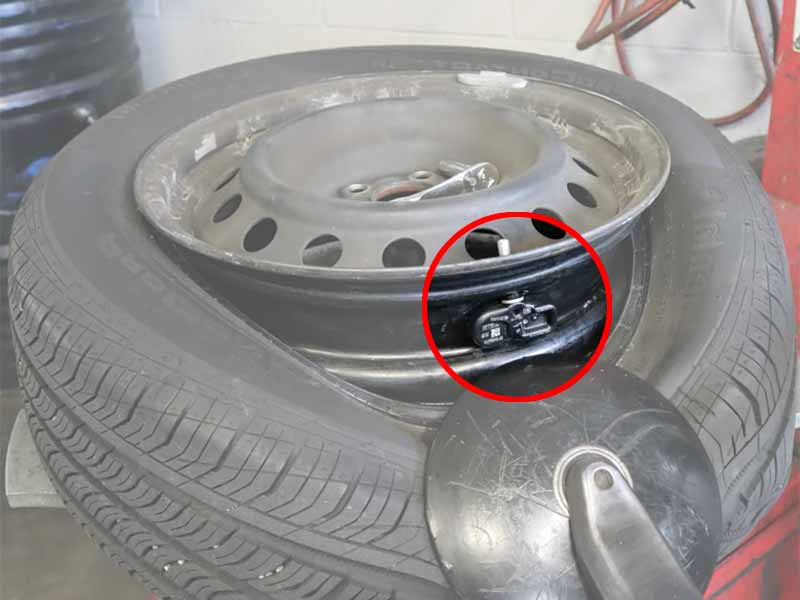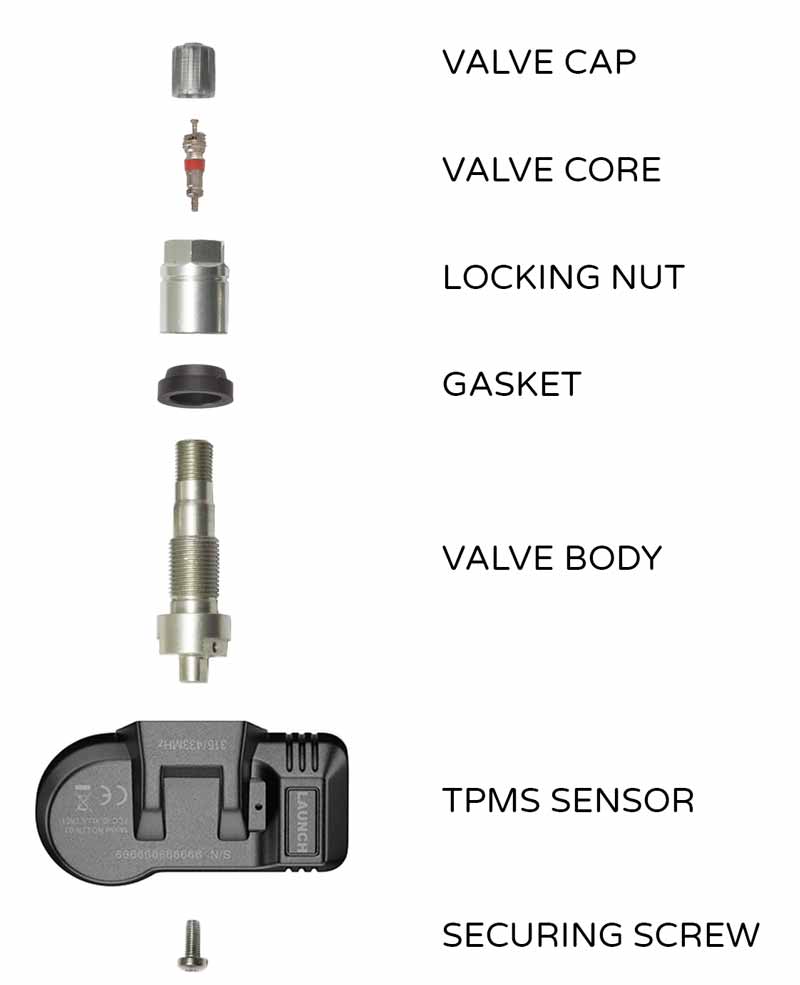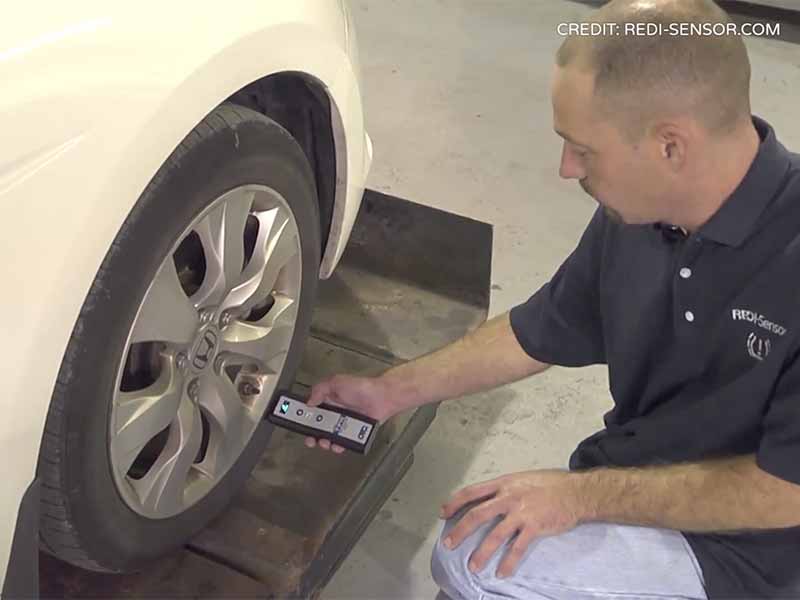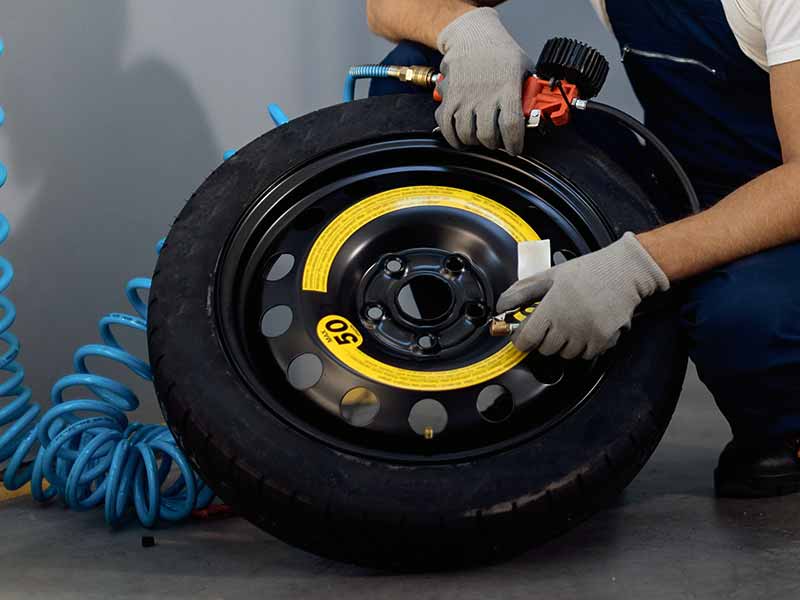Ever had that alarming moment when your vehicle’s dashboard lights up with a tire pressure warning? It’s a sign that your TPMS (Tire Pressure Monitoring System) sensors are doing their job. But what happens when these sensors need replacement? Can you take on the task yourself, or is it best left to the professionals?
Can I Replace TPMS Myself?
Yes, you can replace TPMS sensors yourself. However, it requires specialized tools and knowledge, especially for pairing the new sensors with your vehicle’s TPMS computer.
In this article, we’ll delve deep into the world of TPMS sensors, discussing the tools required for replacement, the intricacies of cloning versus programming sensors, the importance of tire rebalancing, and expert tips to guide you through the process.

DIY TPMS Sensor Replacement: Is it Feasible?
Tire Pressure Monitoring Systems (TPMS) have become an integral part of modern vehicles, ensuring that drivers are alerted to any significant changes in tire pressure. This system not only enhances safety but also optimizes tire performance and longevity. But when it comes to replacing TPMS sensors, many vehicle owners wonder if it’s a task they can tackle on their own.
What is TPMS?
Before diving into the replacement process, it’s essential to understand what TPMS is. TPMS is a system designed to monitor the air pressure inside the tires. When the pressure drops below or rises above the recommended levels, the system alerts the driver, allowing them to take corrective action. For a more in-depth look at how TPMS works, check out our detailed guide here.
The Challenges of DIY Replacement
While the idea of replacing TPMS sensors yourself might sound appealing, especially for those who enjoy DIY automotive projects, there are several challenges to consider:
- Specialized Tools: TPMS sensor replacement isn’t as simple as changing a tire. It requires specific tools, most notably a TPMS scan tool, which is essential for pairing the new sensors to the vehicle’s TPMS computer.
- Technical Know-How: Even with the right tools, the process can be intricate. It’s not just about physically replacing the sensor but ensuring it communicates correctly with the vehicle’s system.
- Risk of Damage: Incorrect installation can lead to damage to the new sensor or even the tire itself. Moreover, if the tire is removed from the rim, it will need to be rebalanced, adding another layer of complexity to the process.
Expert Tips for a Successful Replacement
- Research: Before starting, research your vehicle’s specific TPMS system. Different makes and models might have varying systems and requirements.
- Seek Guidance: If unsure about any step, it’s always better to consult with a professional or refer to trusted resources like our guides on how to program TPMS sensors and how to activate a new TPMS sensor.
- Test After Installation: Once the new sensor is in place, test it to ensure it’s working correctly. Drive the vehicle for a short distance and monitor the TPMS alerts.

Necessary Tools for TPMS Sensor Replacement
When it comes to replacing TPMS sensors, having the right tools on hand is crucial. While some vehicle owners might have a basic toolkit for general car maintenance, TPMS sensor replacement requires some specialized equipment. Let’s delve into the essential tools you’ll need for a successful replacement.
TPMS Scan Tool
The TPMS scan tool is the most critical tool in the replacement process. This device allows you to:
- Pair New Sensors: When you install a new TPMS sensor, it needs to communicate with the vehicle’s tire pressure monitoring system. The scan tool facilitates this pairing, ensuring the system recognizes the new sensor.
- Read Sensor Data: The tool can read data from the sensors, such as air pressure levels and battery status. This feature is invaluable for diagnosing issues and confirming the new sensor is functioning correctly.
- Reset the TPMS System: After replacing sensors, the system might need a reset. The scan tool can perform this reset, ensuring the tire pressure monitoring system operates without glitches.
Tire Lever
A tire lever, or bead lever, is used to remove the tire from the rim. While it’s possible to replace a TPMS sensor without removing the tire entirely, having a tire lever on hand can make the process smoother, especially if you encounter any challenges.
Valve Core Tool
The valve core tool is a simple device used to remove or tighten the valve core within the valve stem. This tool is essential when replacing TPMS sensors, as you’ll need to deflate the tire to access the sensor.
Torque Wrench
A torque wrench ensures that the TPMS sensor is tightened to the manufacturer’s specifications. Over-tightening can damage the sensor, while under-tightening can lead to air leaks.
TPMS Service Kit
A TPMS service kit typically includes replacement parts like gaskets, seals, and valve cores. It’s a good idea to replace these components when installing a new sensor to ensure a proper seal and prevent air leaks.
Additional Considerations
While the tools listed above are essential for TPMS sensor replacement, it’s also worth noting the importance of tire rebalancing if the tire is removed from the rim. When a tire is removed and then remounted, it can become unbalanced, affecting the vehicle’s performance and safety. Most tire shops have specialized equipment for mounting and balancing tires, ensuring they’re perfectly aligned and balanced for optimal performance.

Autel MaxiTPMS Reprogramming Tool
Cloning Vs. Programming TPMS Sensors
The world of TPMS sensors can seem intricate, especially when it comes to the nuances of setting up new sensors. Two primary methods are used to introduce new TPMS sensors to a vehicle’s system: cloning and programming. While both methods achieve the same goal, they differ in their approach and requirements. Let’s delve into the specifics of each method and understand their advantages and disadvantages.
Cloning TPMS Sensors
What is Cloning? Cloning involves creating an exact copy of the original sensor’s ID and transferring it to the new sensor. This means the vehicle’s tire pressure monitoring system continues to recognize the new sensor as if it were the original.
Advantages:
- Simplicity: Cloning is a straightforward process, especially when using a dedicated TPMS tool designed for cloning.
- No Relearning Required: Since the new sensor has the same ID as the old one, there’s no need for the vehicle’s system to relearn or recognize a new sensor.
Disadvantages:
- Limited to Identical Replacements: Cloning works best when replacing a sensor with an identical model. Using a different model or brand might pose challenges.
Programming TPMS Sensors
What is Programming? Programming involves assigning a new ID to the TPMS sensor. Once the new ID is set, the sensor is introduced to the vehicle’s TPMS system, which then recognizes and communicates with the new sensor.
Advantages:
- Flexibility: Programming allows for the use of different sensor models or brands, offering more flexibility in replacement choices.
- Fresh Start: Since the sensor gets a new ID, any issues or glitches tied to the old sensor’s ID are eliminated.
Disadvantages:
- Requires Relearning: After programming a new sensor, the vehicle’s TPMS system needs to relearn or recognize the new sensor, which can be an additional step in the replacement process.

Relearning TPMS Sensor Positions
Tire Pressure Monitoring Systems (TPMS) have revolutionized vehicle safety by providing real-time data on tire pressure. However, for the system to function optimally, it’s not just about having the right sensors in place; it’s also about ensuring they communicate their position accurately to the vehicle’s TPMS computer. This is where the activation process comes into play.
The Importance of Relearning
Why is Relearning Necessary? When you replace or rotate your tires, the TPMS sensors’ positions might change. The vehicle’s TPMS computer needs to know the exact location of each sensor to display accurate tire pressure readings for each tire. Relearning ensures that the TPMS computer recognizes and correctly identifies the position of each sensor.
The Relearning Process
There are a wide variety of methods different manufacturers use for sensor relearning. You’ll need to research the method required for your specific vehicle make and model.
Can I Relarn TPMS Sensors Without a Special Tool?
While some vehicles allow for manual relearning without a dedicated tool, many modern vehicles require a TPMS tool. You’ll need to research the procedure unique to your make and model of vehicle to discover what tools, if any, are required.
Resources
Below are some links you may find helpful when learning about tires
Final Thoughts
Tire Pressure Monitoring Systems (TPMS) are crucial for maintaining the safety and efficiency of your vehicle. Understanding the intricacies of how these systems work, from the sensors to the activation process, can empower vehicle owners to make informed decisions about their maintenance and safety. Whether you’re considering a DIY approach or seeking professional assistance, it’s essential to have a comprehensive grasp of the subject.
Remember, while replacing and managing TPMS sensors might seem straightforward, the process requires specific tools and knowledge. It’s not just about changing a sensor; it’s about ensuring that your vehicle’s entire tire pressure monitoring system functions optimally.
Good luck and happy motoring.





